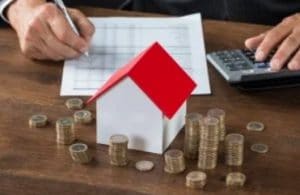What’s the right strategy for this stage of the property cycle?
When it comes to property investment you’ll often hear two conflicting philosophies – invest for capital growth or invest for positive cash flow.
We’re in for a long period of low interest rates, low inflation and low wages growth, meaning that we’re also likely to experience generally lower capital growth for some years, and this has led some investors to ask if they should turn to cash flow positive properties.
You know…properties where the rental income covers all of the property’s expenses (including interest) leaving money in their pocket each month.
So which strategy is better?
 There’s no simple answer.
There’s no simple answer.
Clearly if both strategies exist there is a place for both.
I see more beginning investors invest in cash flow positive properties.
On the other hand, all the successful investors I’ve worked with over the year, those who have built a substantial asset base, have grown their portfolio through leveraging off the capital growth of their investments.
Of course I understand why new investors would be keen to buy a property with positive cash flow.
They tend to be cheaper, so it’s easier to purchase and support this type of property.
While these properties may give you short-term income, the problem is they will never allow you to accumulate the equity necessary to become truly wealthy.
And while the rent may seem relatively high initially, it’s the ongoing capital growth of your property that will underpin its long-term rental income, which means that if you buy in low capital growth areas, your rents won’t increase that much over the years.
 Sure, cash flow is important, but the few dollars a week of positive cash flow you might receive is not really going to make much difference to your lifestyle and the lack of capital growth will hamper your ability to get the deposit for your next property.
Sure, cash flow is important, but the few dollars a week of positive cash flow you might receive is not really going to make much difference to your lifestyle and the lack of capital growth will hamper your ability to get the deposit for your next property.
And when interest rates increase – as they will someday – a property that is cash flow positive today may be cash flow negative tomorrow.
In my mind an investor’s focus should be on building their asset base so they can eventually develop passive income from their assets giving them financial freedom.
The importance of Land to Asset ratio?
Since properties with higher capital growth have lower rental returns, you won’t find cash flow positive properties in the higher growth, better locations of our capital cities.
You must look to regional areas where buyers require a higher rental yield (cash flow) to make up for the lack of capital growth.
However, one of the main reasons properties increase in value is the scarcity value of the land they sit on, meaning you should buy properties with a high land to asset ratio (the land component should make up a substantial portion of the value of the property).
 If you think about it, when you by a cash flow type property in regional areas where prices are lower, the land value per square metre tends to be lower because there’s plenty of available land.
If you think about it, when you by a cash flow type property in regional areas where prices are lower, the land value per square metre tends to be lower because there’s plenty of available land.
This means the building accounts for much of the asset’s value and in these locations the dwelling may lose value faster than the land can gain value, thus hampering long-term capital growth.
On the other hand, when you buy a high growth property, it’s likely you have purchased in an area with a limited supply of land relative to buyer demand and your land-to-asset ratio is likely to be high, meaning the land component makes up a higher proportion of the property’s overall value, giving the asset strong capital growth potential.
Now don’t misunderstand me…
The ultimate aim of property investment is to obtain cash flow that will give you financial freedom, but things have to happen in the correct sequence.
Your investment journey is likely to comprise of three stages over 20 to 30 years:
- The Accumulation Stage –when you build your asset base (net worth) through capital growth of well-located properties. You can speed this up through “manufacturing” capital growth through renovations or development.
- Transition Stage – once you have a sufficiently large asset base, you slowly lower your Loan to Value ratios so you can move on to the…
- Cash Flow Stage – now you can live off your property portfolio.
So how do you cope with negative cash flow in the mean time?

Of course investing in negatively geared, high growth property means you have to cover the cash flow shortfall each month.
One way of doing this is to set up the correct loan structure to buy you time.
For example, you might use a line of credit could to supplement the rental to pay the interest on the investment loan and property expenses.
This facility is often set up to cover the shortfall for 3 or more years until the property’s value grows sufficiently to refinance the loan out of the extra equity.
To use this investment strategy, correct asset selection is critical because to make it worthwhile you need the property’s value to increase significantly more than your outstanding loan balance increases.
This means you need to be investing in high quality assets so that you can maximise the chances of enjoying strong capital growth.
This strategy is not without risks…
The 4 main risks are:
- Poor capital growth – that’s why correct asset selection is so important.
- Interest rate increases – which can be addressed by fixing interest rates on some or all of your debt.
- Poor rental growth – which highlights the importance of owning properties that will be in continuous strong demand by a wide demographic of tenants.
- Lack of financial discipline – never use your financial buffers for uses other than covering your property related expenses.
The Bottom Line
I can understand why beginning investors would be keen to buy a property with positive cash flow.
But while they may give you short-term income, these properties will never allow you to accumulate the equity necessary to become truly wealthy.
Remember as a property investor your focus should be on safely building your asset base so you can eventually develop the passive income from your assets that will allow you to enjoy the financial freedom you desire.
- 8 Charts explaining why we’re in for a great time in property in 2021 - January 5, 2021
- New data shows COVID-19’s impact on Australians’ personal finances, including debt and insurance - December 21, 2020
- 4 key reasons why the property pessimists are changing their minds - October 12, 2020

